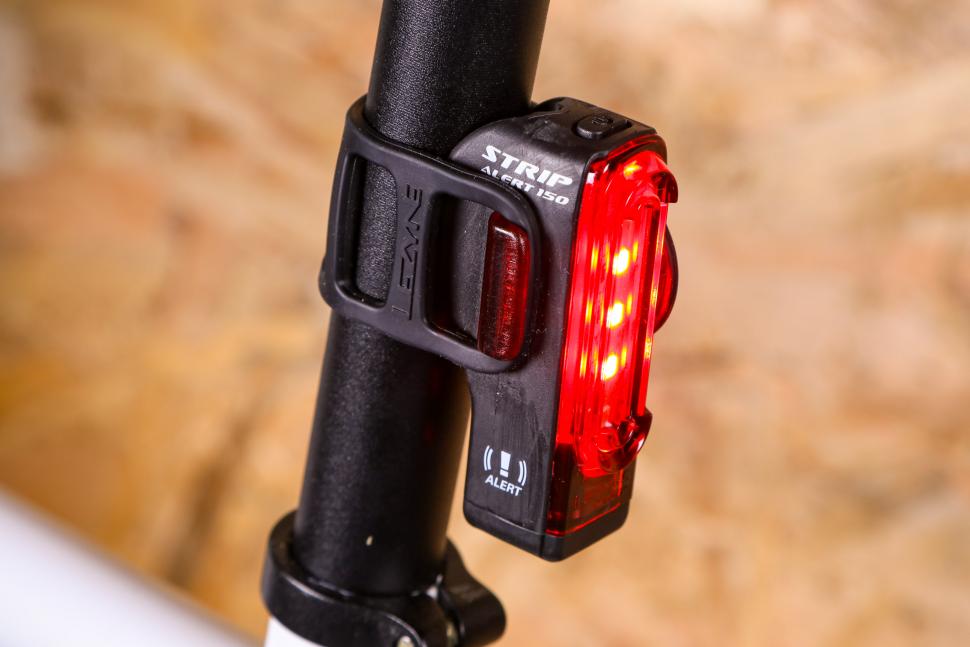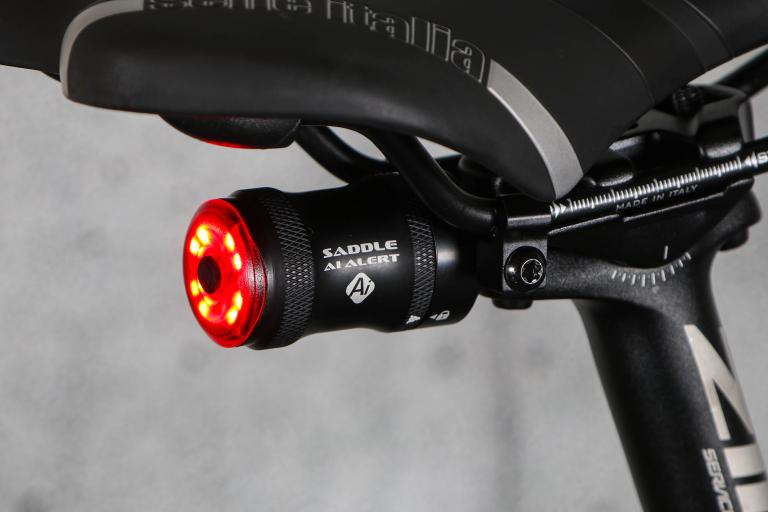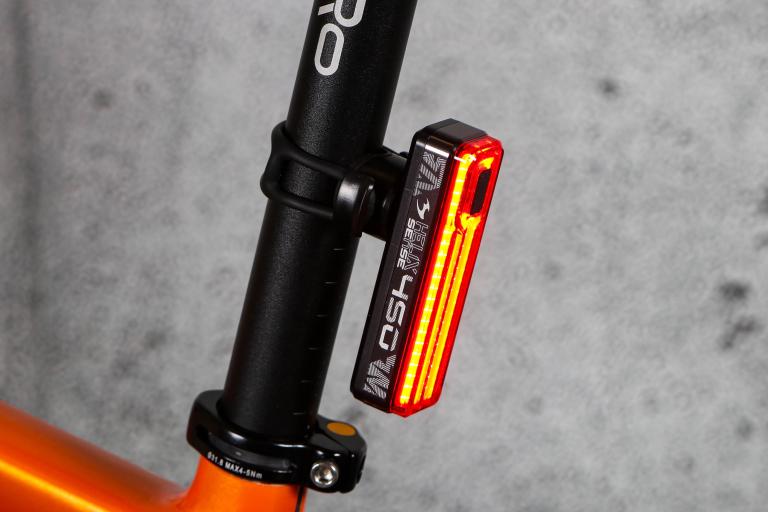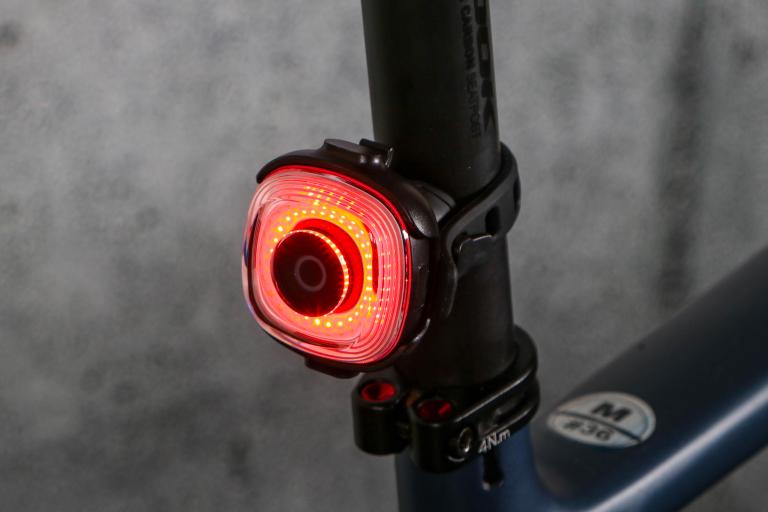- News
- Reviews
- Bikes
- Accessories
- Accessories - misc
- Computer mounts
- Bags
- Bar ends
- Bike bags & cases
- Bottle cages
- Bottles
- Cameras
- Car racks
- Child seats
- Computers
- Glasses
- GPS units
- Helmets
- Lights - front
- Lights - rear
- Lights - sets
- Locks
- Mirrors
- Mudguards
- Racks
- Pumps & CO2 inflators
- Puncture kits
- Reflectives
- Smart watches
- Stands and racks
- Trailers
- Clothing
- Components
- Bar tape & grips
- Bottom brackets
- Brake & gear cables
- Brake & STI levers
- Brake pads & spares
- Brakes
- Cassettes & freewheels
- Chains
- Chainsets & chainrings
- Derailleurs - front
- Derailleurs - rear
- Forks
- Gear levers & shifters
- Groupsets
- Handlebars & extensions
- Headsets
- Hubs
- Inner tubes
- Pedals
- Quick releases & skewers
- Saddles
- Seatposts
- Stems
- Wheels
- Tyres
- Health, fitness and nutrition
- Tools and workshop
- Miscellaneous
- Cross country mountain bikes
- Tubeless valves
- Buyers Guides
- Features
- Forum
- Recommends
- Podcast
review
 2020 Lezyne Strip Alert Drive
2020 Lezyne Strip Alert Drive£40.00
VERDICT:
Rugged construction, with braking tech and several flashing modes, but concerns over battery life take the shine off
Rugged, waterproof design
Very visible flashing modes
Range of mounting options
Battery life
Alert braking system doesn't really add much
Micro-USB charging socket rather than more modern USB-C
Weight:
62g
Contact:
At road.cc every product is thoroughly tested for as long as it takes to get a proper insight into how well it works. Our reviewers are experienced cyclists that we trust to be objective. While we strive to ensure that opinions expressed are backed up by facts, reviews are by their nature an informed opinion, not a definitive verdict. We don't intentionally try to break anything (except locks) but we do try to look for weak points in any design. The overall score is not just an average of the other scores: it reflects both a product's function and value – with value determined by how a product compares with items of similar spec, quality, and price.
What the road.cc scores meanGood scores are more common than bad, because fortunately good products are more common than bad.
- Exceptional
- Excellent
- Very Good
- Good
- Quite good
- Average
- Not so good
- Poor
- Bad
- Appalling
The Lezyne Strip Alert Drive is the second tier in the new 'Alert' range of rear lights from Lezyne. It's a rugged design providing five different flashing modes and a braking sensor. It has a good range of mounting options, although you will need to recharge it more regularly than you might like.
I've used previous iterations of the Lezyne Strip light, but a quick click through the five modes on this new 2020 Alert version showed me that it's hugely improved in brightness, with some really eye-searing flashing modes.
> Find your nearest dealer here
It's a 'co-moulded' construction, with a fairly thick rubberised outer around the harder red plastic of the red body of the light, so up to taking a few knocks. I couldn't find a quoted IPX rating, but running it under the tap showed it's very waterproof. I had no issues taking it out in heavy rain.
The mounting system, a rubber ladder strap plus an extra spacer, means it can attach to different width aero or round seatposts, and – my preferred method – to the seatstay, where it works well.
There are five LEDs for up to 150 lumens of output, and five output modes. Quoted run-times on the various modes vary from 4 hours for the 35-lumen Blast mode to 27 hours for the 3-lumen Economy, with Day Time flash giving out the max 150 lumens for 5hrs 30mins, and two 25-lumen flashing modes lasting 8hrs 30mins and 10hrs 30mins.
When slowing down or coming to a stop, the 'Alert' braking mode causes the light to glow a brighter solid red. When you get going again, within a few moments, the previous mode kicks back in.
In use
The Strip Alert Drive is easy enough to operate: hold the single button down for two seconds to turn on, then use a single press to cycle through the five modes. A two-second press turns it off again. There is a memory function, so it will go straight to the last used mode when turned back on. I had no issues operating it with gloves on.
A quick press of the button when the light is off shows the battery level either as a faint green light, or red if the light needs recharging.
My fellow group riders didn't really notice the Alert brake light feature until about 25 miles into one of our rides, when someone asked if it was somehow changing modes when we pulled up to junctions. I think the issue is that because bicycles don't, as a rule, have brake lights, they didn't expect me to have one. It didn't seem to make vehicular traffic stay any further back when slowing up at junctions, either.
The flashing modes are really quite bright, so much so that I think if I was using the light on a narrow cyclepath I would reduce it to the minimum 3-lumen setting to avoid annoying riders behind. Even then it is visible from a good 60 metres behind.
The daytime mode is exceptionally bright and worked well.
Battery life and charging
My main bugbear with the Strip Alert Drive is the battery life. I found that the red recharge indicator would be on at the end of pretty much every ride of about three hours, using a mix of Blast, daytime and flash modes, meaning I had to bring it back in for a recharge. On one three-hour ride with a bit of urban based stopping and starting, it ran out before we had finished the ride. Presumably the Alert system coming on whenever I was slowing down must have been eating into the quoted run-times on the different modes.
I would happily take a longer battery life for a few extra grams of weight in the unit. At 66g it isn't too bad, but I can think of other lights not dissimilar in weight, such as the Exposure TraceR and Gemini Iris, which I can get multiple three-hour rides from, or be able to commute the vast majority of the week with, before they need recharging.
On the subject of which... I was disappointed to see the now old standard micro-USB connection, as most small devices and phones have been moving over to USB-C. A small micro-USB lead is included, and the charging point is accessed via a rubber bung end cap, which is tethered to the light to prevent losing it. Charging takes around three hours.
Value
The Lezyne Strip Alert Drive has an RRP for £40, though a quick hunt online shows it can be had for around £36.
Looking at other rear lights with similar 'braking technology' built in, the Exposure TraceR 2 Reakt is very well reviewed, with more generous battery life and CNC construction. However, it is also considerably more expensive at £60. I can confirm the better battery life, though – I own one, and I can do several night rides before it needs a recharge.
The See.Sense Icon 2, an improved version of the Kickstarter original, now includes a braking mode along with a plethora of other features such as anti-theft tech. We tested it as part of a set with a front light, but the rear can be bought on its own for £79.99.
> Buyer’s Guide: 18 of the best rear lights for cycling
To sum up – the Strip Alert Drive offers a rugged construction, with braking tech, daylight mode and a range of mounting options. However, the braking tech doesn't seem to add much, and the battery life could be significantly better. Overall, it's not bad, but could be better.
Verdict
Rugged construction, with braking tech and several flashing modes, but concerns over battery life take the shine off
road.cc test report
Make and model: Lezyne Strip Alert Drive
Size tested: 150 Lumens max
Tell us what the light is for, and who it's aimed at. What do the manufacturers say about it? How does that compare to your own feelings about it?
Lezyne says: "The Strip Alert Drive 150 is an advanced LED bike tail light with our custom programmed 'Alert' technology. It features our Wide Angle Optics lens that provides up to 270° of visibility and an innovative automatic braking sensor. The ultimate cycling taillight for the incredible daytime visibility and superior visibility after dark."
I've used previous iterations of the Lezyne strip light before, but a quick click through the five modes on this new 2020 Alert version showed me that it's improved in brightness with some real eye-searing flashing modes. I was looking forward to trying out the "Alert" braking system to see if it really worked, or was just a gimmick.
Tell us some more about the technical aspects of the light?
Lezyne lists:
* Custom programmed "Alert" technology.
* Wide Angle Optics lens.
* Co-moulded construction.
* Highly water resistant.
* Max. 150 lumens.
* 5 Output modes.
* Daytime Flash mode.
* Micro USB charging.
Rate the light for quality of construction:
8/10
With the rubberised outer it should stand up to a good few knocks; my previous version from 2015, with the same body, is still going, so this one should last just as well.
Rate the light for design and ease of use. How simple was the light to use?
8/10
Very easy, hold the single button down for two seconds to turn on. Once on, single press to cycle through the five modes. A two-second press turns it off again. There is a memory function, so it will go straight to the last used mode when turned back on.
A quick press of the button, when the light is off, will show the battery level as a faint green light or red if the light needs recharging.
Rate the light for the design and usability of the clamping system/s
9/10
The Strip Alert Drive uses the tried and tested Lezyne rubber "ladder strap", with a large range of adjustment. There is also an additional spacer piece included for various width aero seatposts. It also works very well on seatstays, which was my preferred mounting method, and it will fit on rear rack tubing, although the spacer piece will be needed to make the strap tight enough.
Rate the light for waterproofing. How did it stand up to the elements?
9/10
I couldn't find an IPX rating, but running it under the tap didn't allow any water ingress. Make sure the end cap is on tight though!
Rate the light for battery life. How long did it last? How long did it take to recharge?
4/10
Probably the main area that lets the Strip Alert Drive down. I found that the red recharge indicator would be on at the end of pretty much every ride of about three hours length, meaning I had to bring it back in for a recharge (using a mix of Blast, daylight and flash modes). Presumably the Alert system is eating into the quoted run-times.
Charging time was approximately three hours.
Rate the light for performance:
8/10
The flashing modes are really quite bright; if using the light on a narrow cyclepath, I think I would reduce it down to the minimum 3 lumens setting to prevent annoying riders behind. Even that is visible from 60 metres behind. The Day Time mode is exceptionally bright and worked well.
My fellow group riders didn't really notice the Alert brake light feature, and I'm not convinced that it's a "must have".
Rate the light for durability:
7/10
Rubberised outer means it should stand up to a good few knocks. It's definitely very waterproof.
Rate the light for weight:
8/10
No problem – but I would take extra grams for a longer lasting battery on future versions.
Rate the light for value:
6/10
For a light with built-in braking technology, it's decent value compared to other braking lights, although I didn't feel it added much as a feature.
Tell us how the light performed overall when used for its designed purpose
I felt safer on the roads with it mounted to my seatstay along dark lanes, or riding in daylight using the bright daytime mode.
Tell us what you particularly liked about the light
Brightness, rugged construction, ability to fit onto seatstays as well as seatposts.
Tell us what you particularly disliked about the light
The need to keep recharging.
How does the price compare to that of similar products in the market, including ones recently tested on road.cc?
The Lezyne Strip Alert Drive 150 has an RRP for £40 (though a quick hunt online shows it can be had for around £36); compared to other lights with braking tech, it stacks up well.
The Exposure Tracer MK2 Reakt was very well reviewed, with more generous battery life and CNC construction. At £60 it is considerably dearer than the Strip Drive, but the battery life is definitely better. I own the Exposure and I can do several night rides with it before it needs a recharge.
The See.Sense Icon 2 now includes a braking mode and a plethora of other features, such as anti-theft tech. We tested it as a pair with a front light, but the rear can be bought on its own for approximately £80.
Did you enjoy using the light? Yes, until the battery ran out.
Would you consider buying the light? No
Would you recommend the light to a friend? No
Use this box to explain your overall score
Rugged construction, with braking tech, daylight mode and a range of mounting options. However, the braking tech doesn't seem to add much, and the battery life could be better, compared to other lights on the market.
About the tester
Age: 41
I usually ride: GT Grade My best bike is: Boardman ASR 8.9
I've been riding for: Over 20 years I ride: Most days I would class myself as: Experienced
I regularly do the following types of riding: commuting, club rides, sportives, general fitness riding, mtb, Zwifting
Latest Comments
- nodgedave 2 min 13 sec ago
Toddle off cynic. A great man posting about extremely awful things and you chose to say that? The UCI needs clinical experts like you ... toddle...
- SecretSam 13 min 38 sec ago
Said the spokesperson for Big Hookless
- chrisonabike 6 min 33 sec ago
I think the complaint - if it is in good faith (which is a question...) - may stem from:...
- mitsky 30 min 46 sec ago
Is that same sergeant as keen to prosecute drivers who stray into cycle lanes...? I'm not betting on it.
- quiff 44 min 2 sec ago
There's a lot going on in this report....
- Secret_squirrel 52 min 10 sec ago
Hey FrankH (or are you Nigel in disguise). Take your shit-stirring and fuck off elsewhere....
- mdavidford 1 hour 20 min ago
Well - different reviewers, so different experiences - what works for one person can be annoying and fiddly for the next.
- KDee 1 hour 34 min ago
That's what the article seems to say. Surprised I didn't get an email from Komoot explaining the new fees, but that I'm excluded with that world...
- dave atkinson 2 hours 38 min ago
we were SO lucky with the weather on this one. i've done the butt buster a month later in temperatures that never got above freezing




Add new comment
1 comments
I dont get why the brake mode is not just a solid higher intensity light, bonus points if it can vary with the braking G force.
More chance of a driver noticing if its similar to what they already know.
Seems like it would hit battery life even more on this model though....